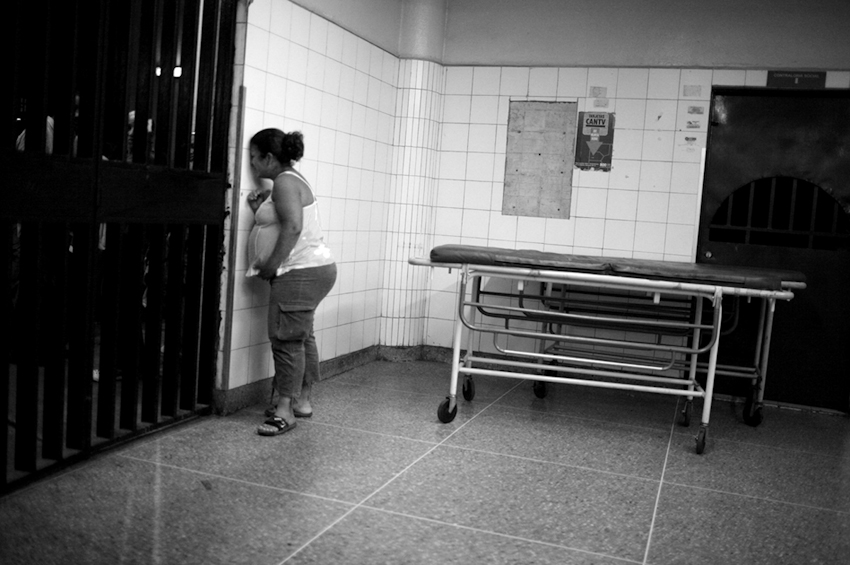Lurdes R. Basolí (Spain): Caracas, The City of Lost Bullets
Inge Morath Award Winner, 2010
Gallery offline – updating soon
Editor’s note: In 2010, in recognition of exceptional quality of submissions received, two applicants were selected as winners of the Inge Morath Award. Lurdes Basolí’s winning project will be featured in IM Magazine in September, and Claire Martin’s project in October 2010.
In Venezuela life is worth the price of a bullet. This photographic project proposes a black and white x-ray of an unending war. Urban violence in Caracas, the capital city of Venezuela, is every year killing thousands of young people. They are chiefly direct or collateral victims of a social and urban conflict where bullets and blood are mixed with drugs and culebras (problems among rival gangs). These are the tendencies of a mob which slip across favelas and streets of the most oil-poor neighborhoods in Venezuela (it is a paradox that in a country so rich in oil, its inhabitants live in harsh conditions). Death lives together with live every day, as figures corroborate: Venezuela has suffered the death of more than 120,000 people since Hugo Chavez came to power (1998); 21,500 only in Caracas. More figures: in Caracas there are 129 killings per each 100,000 inhabitants (1 in Madrid, 7 in Buenos Aires). This makes Caracas the most dangerous capital in America.
Every weekend the Venezuelan media reports the figures of homicides from Friday to Sunday: 30, 50, 70 and even 80 only in Caracas; and what are the causes? Settling scores, fighting for illegal drug control, violent mugging, culebras, kidnapping, cross fire, confusion, and even just for fun. War has not been officially declared in Caracas, but every day it contributes new casualties owing to the background situation, which enables this and seeks to hide it: impunity, police corruption, judicial inefficiency and political lack of interest.
Too often bad luck is decisive, as in being in the wrong place at the wrong time. This is the way that the three children of María Elena Delgado died, in different situations, among the shootings beyond them. It’s the price for living in Barrio Unión, one of the most dangerous parts of Petare (the largest favela in Caracas and the second one in extension in Latin America). However, María Elena, as the vast majority of her neighbors, has not got enough financial possibilities to leave and is thus trapped in the ranchito (it refers to her abode) where she lives.
The urban and social conflict in Caracas remains unnoticed to the current media universe. In fact, it only appears in the newspapers when there is nothing else to talk about, though this is a war with all its characteristics: curfew (at dusk the favelas‘ inhabitants take shelter in their homes); firearms are rampant (in Venezuela there are nine million firearms, 90% of which are illegal); soldiers ready to die (the malandros, young Venezuelan offenders that think reaching the age of 25 is an important achievement); boundaries and war zones (soldiers from each gang cannot go beyond the neighboring areas, as it is punished with death); collateral victims (many are the innocent who die due to cross fire during confrontations and even parties); own generals (hundreds of gangs have their own strategists, leaders who are capable of doing anything); and with its war reports (during some periods in 2007 more people died in Caracas than in Baghdad).
New Goals of the Project:
For the moment I have been working on different situations and emotions: life and death in the favelas, fear, helplessness, anger, resignation, desolation, pain, etc. I have been mainly focused on the victims, such as mothers, sisters and brothers, wives, sons and daughters, and injured people. To complete this project, from now on I would like to focus on the victimarios (the people who cause death or injury). They are the malandros, the young kids of the favelas. They are 13 years old up to their twenties. They usually die young and if they are asked how they see their lives ten years later they say they will be dead. It is a broken future. They are condemned to kill and be killed. The reasons why they become maleandros are various (belonging to an abandoning family is crucial) and this is what I would like to investigate with my camera. How is their daily life in the street, why do they pick up guns and go out to kill. They are the victims of the society they were born and they cause their own victims. They are in a violence spiral, they are part of a war with no name.
Bio:
Lurdes R. Basolí has postgraduate degrees in Photojournalism and Digital Image from the Universitat Autonoma de Barcelona, Spain, and she has published and exhibited internationally. Her project was recently presented at the Noorderlicht Photofestival in Holland. She lives and works in Barcelona.


like here, brasil!
amazing set of photographs showing the ugly truth of a country that at one period not so long ago had everything going for it. The murder statistics are shocking and plain sad. Being venezuelan myself i know the harrowing present the country is going through .. one wonders can it ever be reversed to a normal state when a whole society’s psyche has been poisoned to such an extent – more often than not i come to the conclusion that it’s impossible.
Fantastic work, both horrific and captivating.
Good to see someone the courage to photograph this as it happens, Rather than the approach of post event photography that seems to be coming commonplace these days.
thankyou for sharing this with everyone.